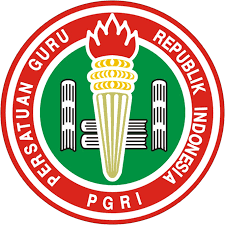The MESSAGE OF MORAL VALUES IN THE FILM "GUBANG THE MOVIE"
Introduction, Method, Results and Discussion, conclusion
DOI:
https://doi.org/10.36526/santhet.v6i1.1601Keywords:
Gubang, message, value, moral, symbol, identityAbstract
Abstract
Gubang is a traditional art of the Malay community on Jemaja Island. In the past, Gubang was a game played by the spirits of the Bunian people. The art of Gubang was later made into a film titled "Gubang The Movie" by Sarman Galang. This film was produced in 2015 by Tuah Production with a drama genre with a duration of 95 minutes. The film titled "Gubang The Movie" by Sarman Galang as a medium in conveying messages through story plots conveyed by the screenwriter to the audience. Film has a function to be able to convey messages in the form of information, education, and entertainment. This paper discusses the moral messages and values in the film titled "Gubang The Movie" by Sarman Galang. The method used in this study is a descriptive method, namely describing the data by analyzing the data according to the reality as it is about the moral values contained in a film titled "Gubang The Movie" by Sarman Galang. Based on the film "Gubang The Movie" there is a moral message that contains a symbol of identity consisting of the value of patience, the value of persistence, the value of courage, and the value of kindness.
Keywords: Gubang, message, value, moral, symbol, identity
References
Zahrana” Karya Habiburrahman El-Zhirazy. Jurnal Pendidikan Bahasa
dan Sastra Indonesia. JP3, Volume 1, No. 1.
Aminuddin. (2011). Pengantar Apresiasi Karya Sastra. Bandung: Sinar Baru
Algensindo
Bertens, K. (2001). Etika. Jakarta: PT Gramedia Pustaka Utama.
Barnard, Timothy P. (2004). Contesting Malayness - Malay Identity Across
Boundaries. Singapura: Singapore University Press.
Barth, Fredrik. (1969). Ethnic Groups and Boundaries. Little : Brown and
Company.
Chaplin. (2006). Dasar-dasar Pendidikan Moral. Yogyakarta: Angkasa
Endraswara, Suwardi. (2005). Metode dan Teori Pengajaran Sastra.
Yogyakarta: Buana Pustaka
Endraswara, S. (2013). Metodologi Penelitian Antropologi Sastra. Yogyakarta: Penerbit Ombak
Geertz, C. (1973). The Interpretation of Cultures. Newyork: Basic Book.
Geertz, Clifford. (1992). Tafsir Kebudayaan. Yogyakarta : Penerbit Kanisius.
Hamidy, UU. (2014). Jagad Melayu Dalam Lintasan Budaya Di Riau / UU Hamidy. Pekanbaru : Bilik Kreatif Press
Kanumoyoso, B. (2018). Malay Maritime World in Southeast Asia. Journal of Maritime Studies and National Integration, 2(1), 16. https://doi.org/10.14710/jmsni.v2i1.2861
Laurer, Robert H. (2003). Perspektif Tentang Perubahan Sosial. Jakarta : PT Rineka Cipta.
Moleong, Lexy J. (2007). Metodologi Penelitian Kualitatif Edisi Revisi.
Bandung: PT Remaja Rosdakarya
Magnis Suseno, Franz. (1990). Etika Dasar. Yogyakarta : Pustaka Filsafat
Nurgiyantoro, Burhan. (2005). Teori Pengkajian Fiksi. Yogyakarta: Gajah Mada
Universitas Press.
Nasution, Muhammad Syukri Albani Dkk. (2016). Ilmu Sosial Budaya Dasar.
Jakarta:Rajagrafindo Persada.
Pradopo, R. D. (1995). Beberapa Teori Sastra, Metode Kritik, dan
Penerapannya. Yogyakarta: Pustaka Belajar
Parsudi Suparlan.(2004). Hubungan Antar Sukubangsa. Jakarta : Yayasan
Pengembangan Kajian Ilmu Kepolisian
Reid, A. (2001). Understanding Melayu (Malay) as a source of diverse modern identities. Journal of Southeast Asian Studies, 32(3), 295–313. https://doi.org/10.1017/s0022463401000157
Royce, Anya Peterson. (1977). The Anthropology of Dance. Bloomington and London: Indiana University Press.
Salam, Burhanuddin. (2000). Etika Individual, Pola Dasar Filsafat Moral.
Jakarta: PT Rineka Cipta.
Semi, Atar. (1990). Metode Penelitian Sastra. Bandung: Angkasa
Swastiwi, A. W. (2015a). Perubahan Sosial Masyarakat Melayu Kepulauan Riau Terhadap Keseniannya. Jurnal Sosiologi Andalas (Andalas Journal of Sociology), 12(1).
Swastiwi, A. W. (2015b). Pulau Tujuh : Sejarah dan Masyarakatnya Pada Naskah Pohon Perhimpunan Peri Perjalanan. BPNB Tanjungpinang.
Turner, Bryan S. (ed.) (2009). Teori Sosial Dari Klasik Sampai Postmodern.
Yogyakarta Pustaka Pelajar
Suparlan, P. (1986). ‘ Kebudayaan dan Pembangunan’, Media IKA, Vol. 14,
no.11, hal. 106-135. Jurusan Antropologi, U.I.
Sugiyono. (2008). Exspresi Kesusastraan Dalam Kebudayaan. Bandung: Tari
Sito.
Setiowati, Ririn. (2013). Analisis Nilai-Nilai Moral dalam Novel “Bintang Anak
Tuhan Karya Kirana Kejora”. Jurnal Pendidikan Bahasa dan Sastra
Indonesia. Tanjung Pinang: UMRAH
Wibowo, I. S. (2006). Semiotika : Aplikasi Praktis Bagi Penelitian Dan
Penulisan Skripsi Mahasiswa Ilmu Komunikasi. Tangerang





























